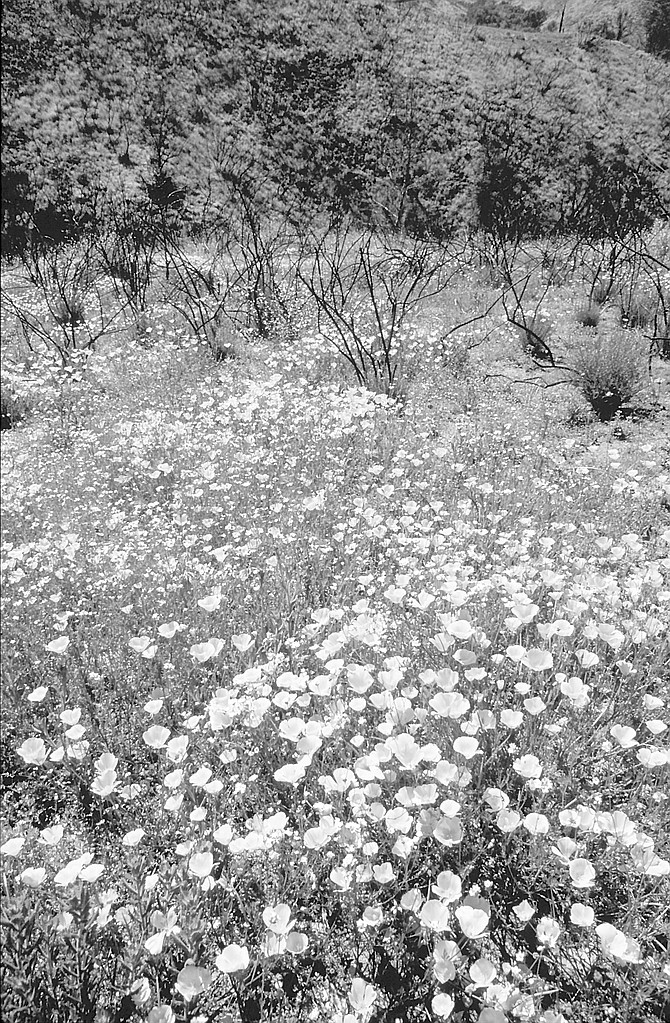 Facebook
Facebook
 X
X
 Instagram
Instagram
 TikTok
TikTok
 Youtube
Youtube

Now that San Diego County's historic megafires are extinguished, outdoor-oriented folks — and the just plain curious — are anxious to get out there and do some sightseeing. The full recovery of the natural landscape will take a decade or two for the chaparral-dominated zones and half a century or more (if ever) for the oak/evergreen-forest of the Cuyamaca Mountains. Obviously, there's no big rush either to marvel at the abrupt transformation we've just had or observe the long-term natural recovery.
From a recreational standpoint, the loss of opportunity for San Diegans is immense. The 25,000-acre Cuyamaca Rancho State Park was completely burned over, with only singed islands of old-growth vegetation and certain campground and picnic structures remaining intact. One of the brightest gems in the San Diego County park system, William Heise Park, was heavily damaged. Acreage in some of the county's open-space preserves was swept by flames. So were certain sections of municipal recreation areas such as Escondido's Daley Ranch, Poway's Iron Mountain, and San Diego Mission Trails Regional Park. A substantial fraction of the entire Cleveland National Forest was burned over.
Most of these areas will be closed for weeks or months to recreational use for assessment of fire damage and erosion potential. Stay out of these closed areas even though it may be easy to walk into them by way of unfenced boundaries. Once these park areas are open again, be sure to stay on established trails. Don't make new paths across the fire-denuded landscape or cut corners along switchback trails, even though it may be very tempting to do so.
The silver lining on the dark cloud looming over our county landscape is the promise of extravagant displays of fire-following wildflowers a few months from now. With the return of repeated soaking rains, which looks likely this winter season, the period between February and May could result in vast wildflower carpets coating hundreds of square miles of foothill and mountain landscape. The seeds of up to 100 species of ephemeral plants have been lying dormant in the ground in the fire-swept zones, ready to germinate as soon as the right combination of wildfire, ash, and soaking rain arrives.
If the rainfall comes up too short this winter season, the regenerative process will be delayed. For example, March and April 2003 saw a lavish bloom of native California poppies, Canterbury bells, popcorn-flower, and non-native mustard on slopes overlooking the Santa Margarita River just north of Fallbrook. More than two years had passed before the rainfall was sufficient to trigger the massive germination of seeds.


Now that San Diego County's historic megafires are extinguished, outdoor-oriented folks — and the just plain curious — are anxious to get out there and do some sightseeing. The full recovery of the natural landscape will take a decade or two for the chaparral-dominated zones and half a century or more (if ever) for the oak/evergreen-forest of the Cuyamaca Mountains. Obviously, there's no big rush either to marvel at the abrupt transformation we've just had or observe the long-term natural recovery.
From a recreational standpoint, the loss of opportunity for San Diegans is immense. The 25,000-acre Cuyamaca Rancho State Park was completely burned over, with only singed islands of old-growth vegetation and certain campground and picnic structures remaining intact. One of the brightest gems in the San Diego County park system, William Heise Park, was heavily damaged. Acreage in some of the county's open-space preserves was swept by flames. So were certain sections of municipal recreation areas such as Escondido's Daley Ranch, Poway's Iron Mountain, and San Diego Mission Trails Regional Park. A substantial fraction of the entire Cleveland National Forest was burned over.
Most of these areas will be closed for weeks or months to recreational use for assessment of fire damage and erosion potential. Stay out of these closed areas even though it may be easy to walk into them by way of unfenced boundaries. Once these park areas are open again, be sure to stay on established trails. Don't make new paths across the fire-denuded landscape or cut corners along switchback trails, even though it may be very tempting to do so.
The silver lining on the dark cloud looming over our county landscape is the promise of extravagant displays of fire-following wildflowers a few months from now. With the return of repeated soaking rains, which looks likely this winter season, the period between February and May could result in vast wildflower carpets coating hundreds of square miles of foothill and mountain landscape. The seeds of up to 100 species of ephemeral plants have been lying dormant in the ground in the fire-swept zones, ready to germinate as soon as the right combination of wildfire, ash, and soaking rain arrives.
If the rainfall comes up too short this winter season, the regenerative process will be delayed. For example, March and April 2003 saw a lavish bloom of native California poppies, Canterbury bells, popcorn-flower, and non-native mustard on slopes overlooking the Santa Margarita River just north of Fallbrook. More than two years had passed before the rainfall was sufficient to trigger the massive germination of seeds.
Comments